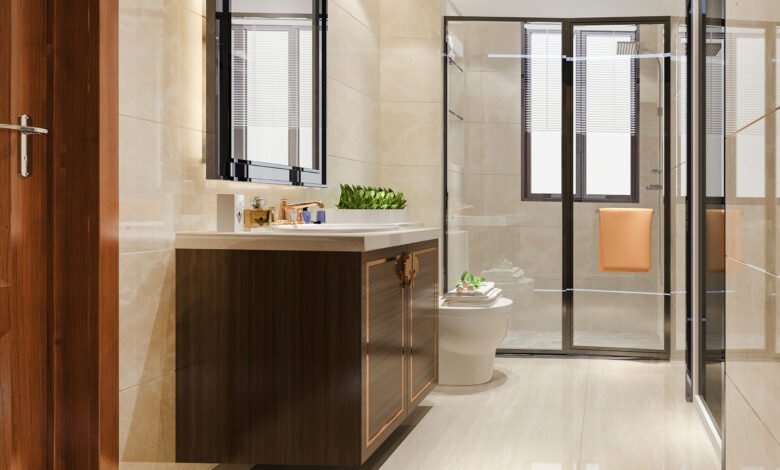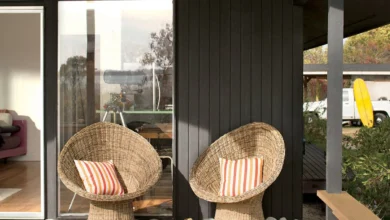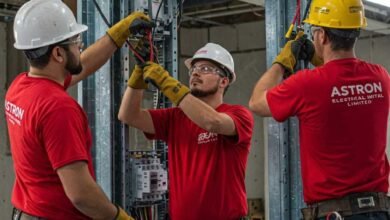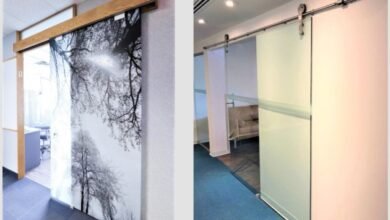Ultimate Guide to Bathroom Renovations in Burlington / Hamilton

A bathroom renovation is one of the smartest ways to boost comfort and property value. But in Burlington or Hamilton, with varying styles, tight urban lots, and local building regulations, a “one-size-fits-all” approach won’t cut it.
In this guide, we’ll take you through everything you need to know—from realistic budgets and local requirements to design trends and contractor tips—to help your bathroom reno run smoothly and deliver excellent results.
Why Renovate a Bathroom in Burlington / Hamilton?
-
Increase resale value & appeal: A modern, functional bathroom is a key factor buyers look at.
-
Fix older systems: Many homes in Hamilton / Burlington are aging and may have plumbing, wiring, or structural issues.
-
Better comfort & efficiency: Upgraded fixtures, improved lighting, better ventilation, and water-saving features make daily life nicer.
-
Adapt to your lifestyle: Maybe you prefer a walk-in shower, barrier-free bathroom, or better storage.
In short, a well-executed renovation is both a quality-of-life improvement and an investment.
Local Cost Benchmarks & What Affects Price
Understanding local cost ranges helps set realistic expectations. Here’s what the data and local examples suggest:
-
A full bathroom renovation in Ontario often ranges between CAD 25,000 to 35,000 depending on scale, finishes, and changes to layout.
-
Some sources put typical Canadian bathroom remodels (mid-level) in the CAD 10,000 to 30,000 bracket.
-
In Burlington specifically, smaller full renos have been cited in the CAD 9,600 to 11,000 range (though these likely are partial/medium scope jobs)
-
In Hamilton, basic remodels (fixture replacement, cosmetic updates) may start as low as CAD 3,000, while full-scale overhaul — new layout, plumbing, tiling — can exceed CAD 20,000 or more.
Key cost drivers / variables
| Factor | Impact on Cost |
|---|---|
| Scope / structural changes (moving walls, plumbing, adding/removing windows) | High — relocating pipes or drains can drive major costs |
| Quality of materials & fixtures | Mid to high — premium tiles, custom vanities, heated floors, frameless glass increase cost |
| Size & accessibility | Medium — tight or awkward spaces cost more to build in |
| Labour rates & contractor availability locally | Medium to high — local demand, travel time, and skilled trades affect pricing |
| Permits, inspections, and code upgrades | Medium — bringing older systems to code can require extra expense |
| Hidden issues / surprises (mold, water damage, structural problems) | Very High — these often cause budget overruns |
Budget Tier Example (approximate for Burlington / Hamilton area)
-
Cosmetic / refresh (no layout changes): CAD 5,000–12,000
-
Mid-level reno: CAD 15,000–30,000
-
High-end / custom / layout change: CAD 30,000+
Including a 10–20% contingency is wise, because surprises happen.
Planning & Design: Key Decisions You’ll Make
Before demolition begins, these decisions have big ramifications:
-
Layout: Will you keep fixtures in same place, or move toilet/shower/vanity?
-
Style / aesthetic: Modern, transitional, farmhouse, spa-like?
-
Fixture selection: Vanity, sink, faucets, shower system, tubs, hardware
-
Tile & surfaces: Floor tile, wall tile, accent walls, shower walls
-
Lighting & mirror setup
-
Ventilation & moisture control
-
Storage & cabinetry
-
Accessibility / aging-in-place design (curbless showers, grab bars)
Create mood boards, make a list of must-haves vs nice-to-haves, and lock down the layout early to avoid costly mid-reno changes.
Permits, Codes & Local Requirements
Because Burlington and Hamilton are governed by municipal building codes (Ontario Building Code plus local bylaws), many renovations require permits and inspection:
-
Any changes to plumbing, electrical, walls, partitions, or ventilation usually require permit.
-
You’ll need to comply with Ontario’s plumbing and electrical codes.
-
Inspections at rough-in stage (before wall closure) are standard.
-
If your home is in a heritage zone or has a conservation overlay, additional approvals may apply.
-
Some contractors can handle permits on your behalf, but always check.
In planning, confirm with your local municipality’s building department what’s needed so you don’t get caught by surprise.
Step-by-Step Renovation Process
Here’s a typical sequence (each step may vary depending on scope):
-
Design & planning
-
Obtain permits & approvals
-
Pre-purchase materials & fixtures (so they’re ready on time)
-
Demolition / removal (tiles, fixtures, cabinetry, walls if needed)
-
Rough-in plumbing & electrical
-
Framing, drywall, moisture barriers
-
Wall & floor tile installation
-
Install shower enclosures, tubs, glass
-
Install vanity, sink, toilet, faucets, lighting, mirrors
-
Grouting, sealing, caulking
-
Finishing touches: trim, hardware, accessories
-
Final inspections, punch list, cleanup
-
Post-reno maintenance & care
At each stage, inspections (if required) should be passed before advancing.
Popular Styles & Trends in Burlington / Hamilton
Here are styles and features gaining popularity in this region:
-
Neutral palettes with bold accents (e.g. matte black fixtures against white tile)
-
Large-format subway / rectangular tiles
-
Frameless glass showers & walk-in / curbless showers
-
Floating vanities & wall-hung cabinets
-
Integrated niches & built-in storage
-
Heated floors & towel warmers
-
LED backlit mirrors, layered lighting
-
Smart showers / digital controls
-
Barrier-free / accessible design elements
Choosing enduring styles helps your bathroom stay relevant and avoids frequent cosmetic updates.
Contractor vs DIY: Where to Draw the Line
Some parts of a bathroom renovation are manageable by a handy homeowner, but many elements demand professional expertise.
DIY possible (with experience, tools, caution):
-
Painting
-
Vanity cabinet installation (if existing plumbing layout is unchanged)
-
Installing mirrors, towel bars, hardware
-
Some tile work (if no plumbing or electrical changes)
Hire a professional for:
-
Relocating plumbing or electrical
-
Working behind walls (wiring, venting, pipes)
-
Waterproofing / vapor barrier
-
Complex tile shapes, curved glass, high-end fixture installation
-
Permit-heavy or code-sensitive systems
In Burlington / Hamilton, many reputable contractors are available; vet carefully (see next section).
Tips to Save Money Without Sacrificing Quality
-
Keep fixture locations the same to avoid plumbing rerouting
-
Reuse existing cabinetry or vanities (refinish them)
-
Select mid-grade but durable materials (good porcelain vs premium natural stone)
-
Buy during sales / volume discounts
-
Limit custom work (off-the-shelf vanities, standard sizes)
-
Do parts of work yourself (e.g. painting, cleanup)
-
Get multiple bids and negotiate
-
Bundle other renovations (e.g. bathroom + laundry) to lower mobilization cost
Mistakes to Avoid
-
Underestimating budget or skipping contingency
-
Locking in style before functionality is settled
-
Moving plumbing / drains without full cost review
-
Ignoring ventilation or moisture control
-
Poor waterproofing — leaks cause major damage
-
Bad lighting or poor mirror placement
-
Delaying permits or skipping inspections
-
Hiring unqualified or uninsured contractors
-
Changing design mid-project — frequent change orders inflate cost
After-Reno Care & Maintenance
-
Seal grout yearly
-
Use proper cleaning products (no harsh acids)
-
Check caulking and re-caulk where needed
-
Monitor ventilation (run exhaust fans)
-
Inspect hardware & fix loose screws
-
Watch for leaks or drips, fix early
Conclusion & Call to Action
Renovating a bathroom in Hamilton is a big investment — but when done right, it yields comfort, beauty, and increased home value. Planning, budget realism, local code compliance, and hiring the right contractor are the keys to success.
At Running Renos, we specialize in bathroom renovations in the Burlington / Hamilton area. From design to permit handling to final finishes, we manage every detail. Contact us today for a consultation or quote.
FAQs
Q: How long does a full bathroom renovation take?
A: Typically 4–8 weeks, depending on extent of work, availability of permits, and material lead times.
Q: Do I need to move fixtures (toilet, tub) to modernize?
A: Not necessarily. Keeping existing layout saves cost. Only move if it’s needed for design or functionality and budget allows.
Q: What finishing materials last longest in bathrooms?
A: Porcelain or high-grade ceramic tile, quartz or engineered stone counters, moisture-resistant drywall, quality caulking and waterproofing.
Q: How much should I expect to spend per square foot?
A: In Ontario, mid-level bathroom renovations might range from CAD 200–400+ per ft² (depending heavily on finishes and complexity).
Q: Can I live in the house during the renovation?
A: Usually yes, but bathroom may be unusable for stretches. Some homeowners plan alternate bathroom usage or temporary facilities.




